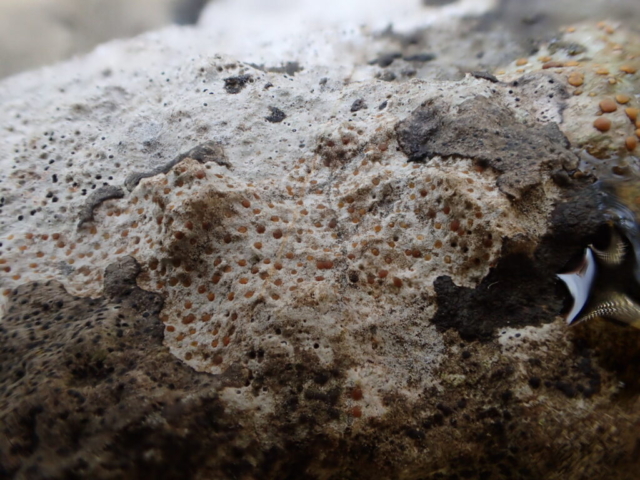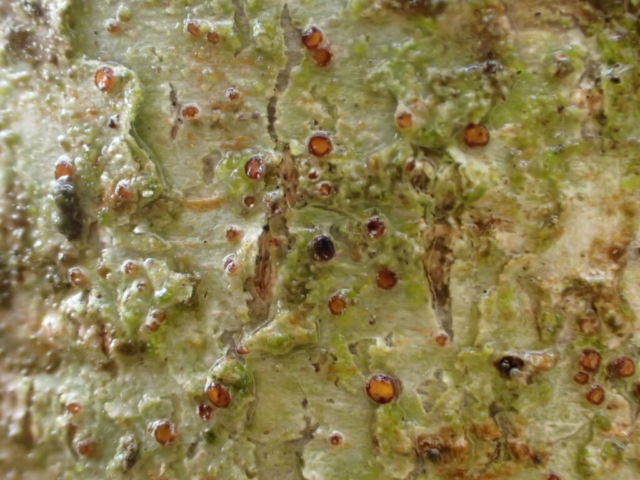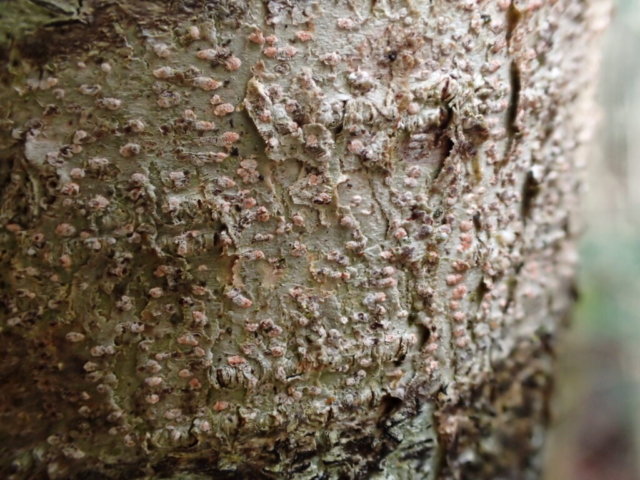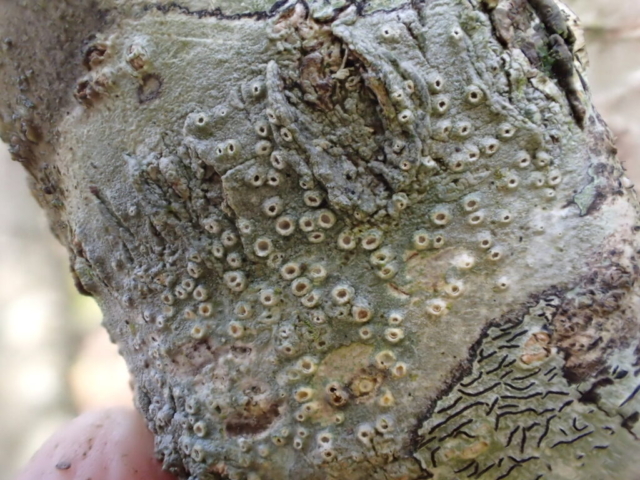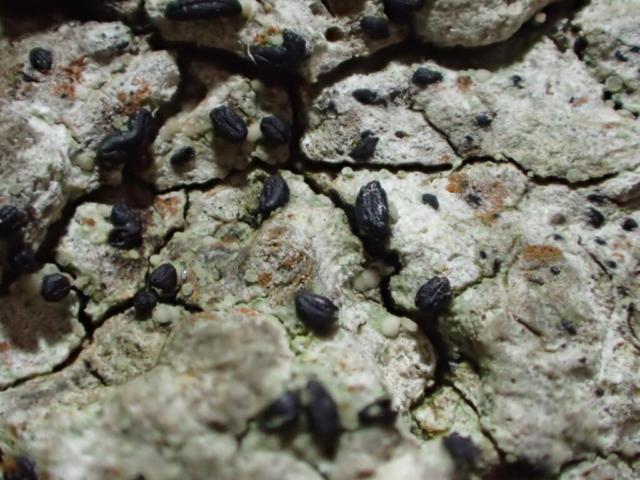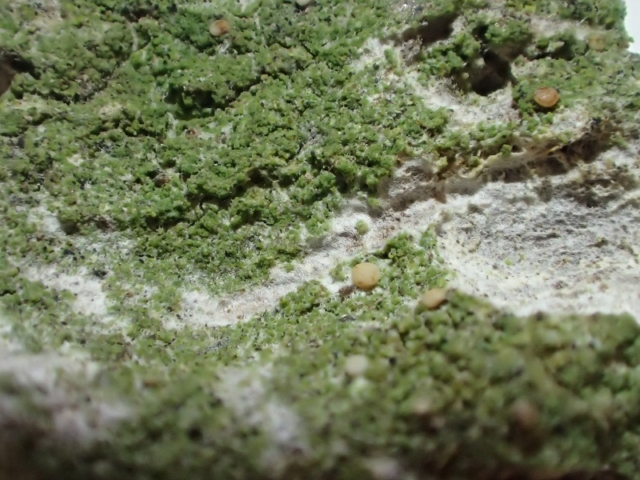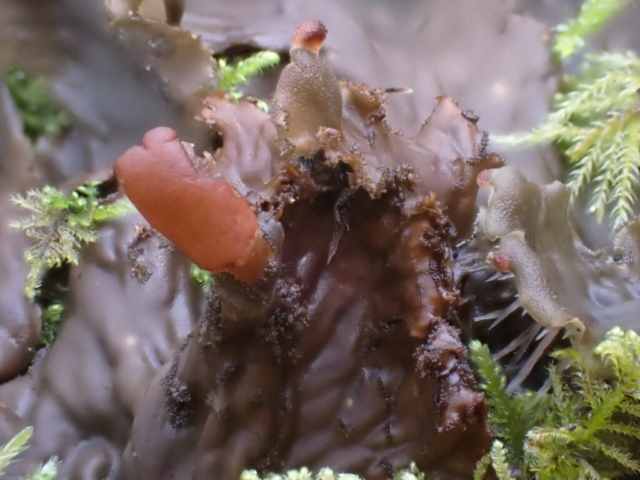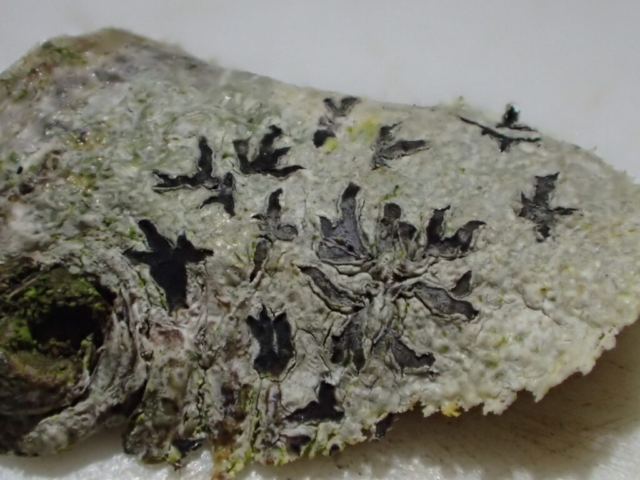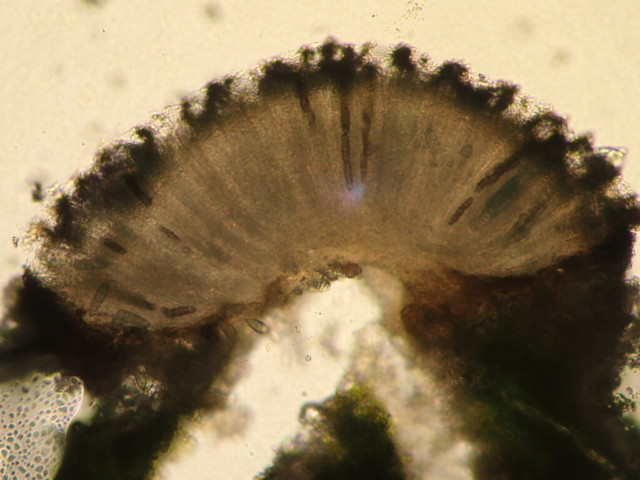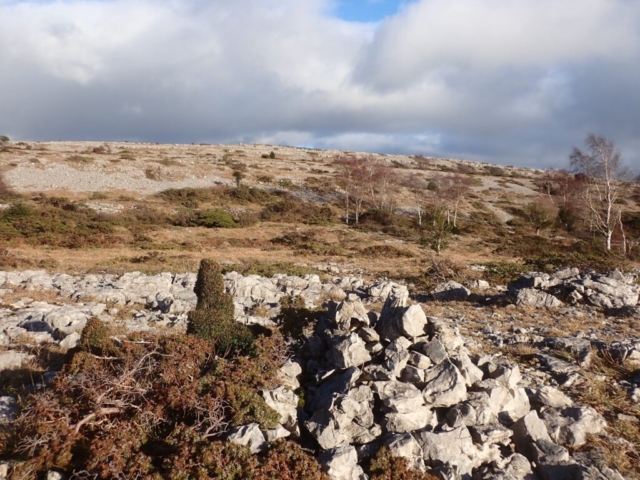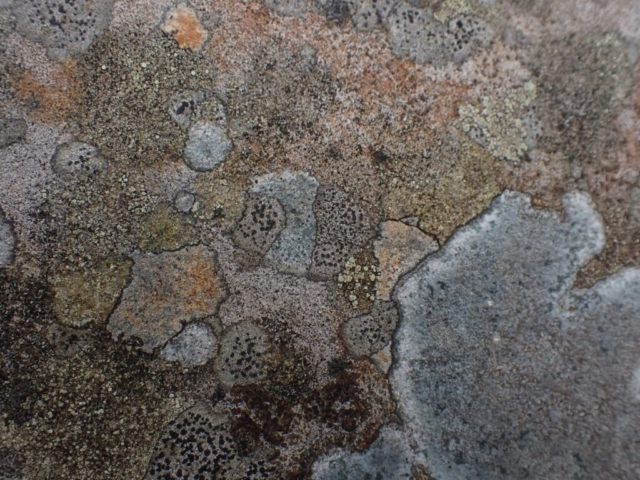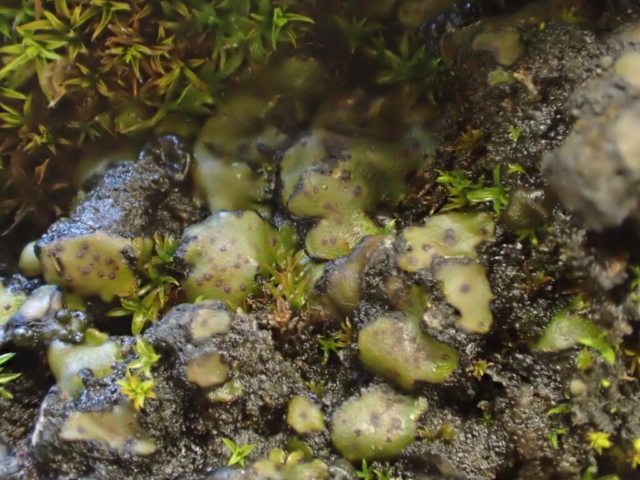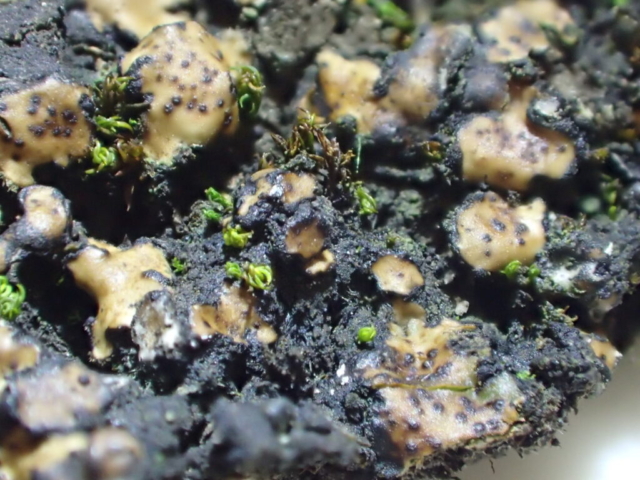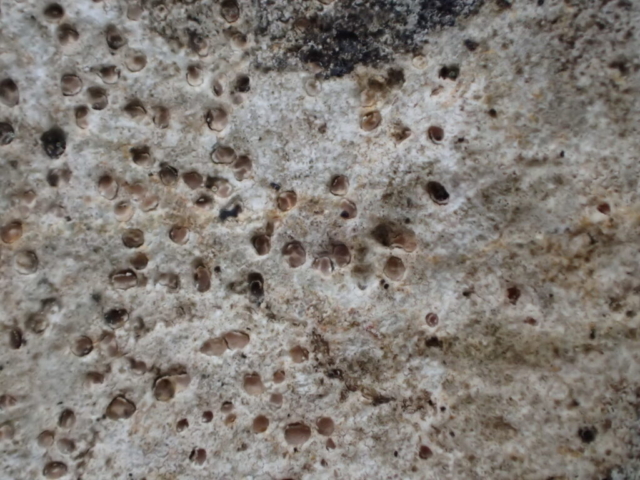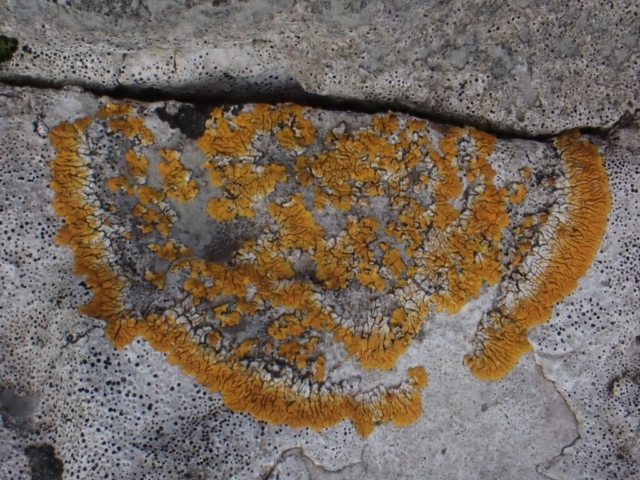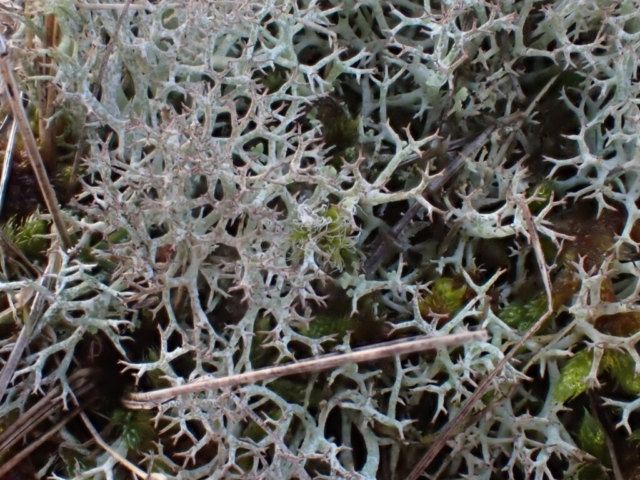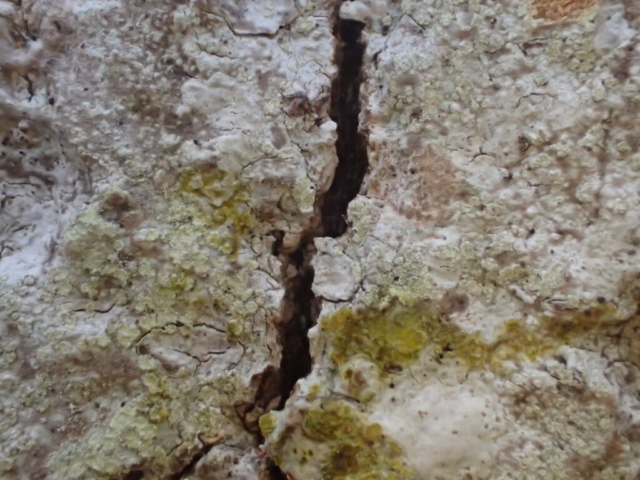The last few trips have been dogged by winter deluges. But, mirabile dictu, the forecast for Sunday kept on improving. The rain stopped, the mists cleared and hordes gathered at the Witherslack Hall kennels. Would there be enough parking room? Yes! How many people were there? 23 I think, though only 11 in the lichen party!
As ever, we didn’t get very far very fast. The hawthorns in the first field provided a convenient opportunity to talk form (leafy, crusty etc) and reproductive features (apothecia, soredia etc). The sun came out; layers were shed. Physcia tenella looked very frilly, and we found a convenient limestone outcrop. Free-living Nostoc was there to be handled, adjacent to the jelly lichen Lathagrium cristatum var. marginale. The latter was in more exposed positions. There was Placynthium nigrum’s blue margin to be admired and the difference between Protoblastenia rupestris and Protoblastenia incrustans could be demonstrated. A nearby ash had the non-lichenised fungus Hysterium angustatum on it. An hour and a half after starting and we had maybe made it 250 metres.
Bu things speeded up. A bit. The fence by the sports pitch had some Cladonias to admire. The adjacent trees boasted Usnea subfloridana, Hypogymnia tubulosa, and fertile Hypotrachyna revoluta sensu strictu. And then we were into the woods.
A mossy wall with Peltigera membranacea , P. praetextata and Scytinium lichenoides detained us a while. Hazels had Graphis scripta and plentiful Coenogonium cinnabarinum extending in a pink sheen several feet up the stems. Chris found Pachyphiale carneola and there was some Thelotrema lepadinum too. Eventually, in a surge of enthusiasm, we made it up onto the open ground for lunch with a view of Morecambe Bay and Heysham nuclear plant. Was the sea silver, gold, or green? Opinions were divided.
The shattered limestone was possibly less rewarding than hoped, though we managed to pick up some of the common limestone species: Gyalecta jenesis, Romjularia lurida, Collema fuscovirens, Cladonia pocillum, Placidium squamulosum. Sandstone erratics gave lovely mosaics of species we mostly couldn’t identify, though there was a lot of Porpidia tuberculosa. The sad ruins of ash and birch trees gave us a dramatic patch of Trapeliopsis pseudogranulosa.
The afternoon was drawing on and a decision was made to move more quickly. Almost immediately we were detained by hi-vis roundels of Caloplaca flavescens. Sheltered juniper seemed to have more lichens: one patch had an impressive Parmelioid community. A fenced off area (presumably to stop cattle falling down a hole) had the best Cladonia rangiformis we had seen all afternoon. Deer bounded off across the ripped out pavements.
Soon we were heading down again: there was more Thelotrema lepadinum, and as the longer-lasting members of the party came through the woods, under the cawing ravens and mewling buzzards, we found primroses in bloom. And then, finally, there was an intriguing white sorediate crust on an ash. Chemicals were applied: C+ orangey yellow, K+ yellow, UV+ orange. Is that Lecanora alboflavida? Or Ochrolechia turneri?
“What a good day” someone wrote afterwards. “ It was really fun” someone else said. I enjoyed it immensely. It is good to know others did too.
Text: Pete Martin. Photos: Chris Cant, Pete Martin

